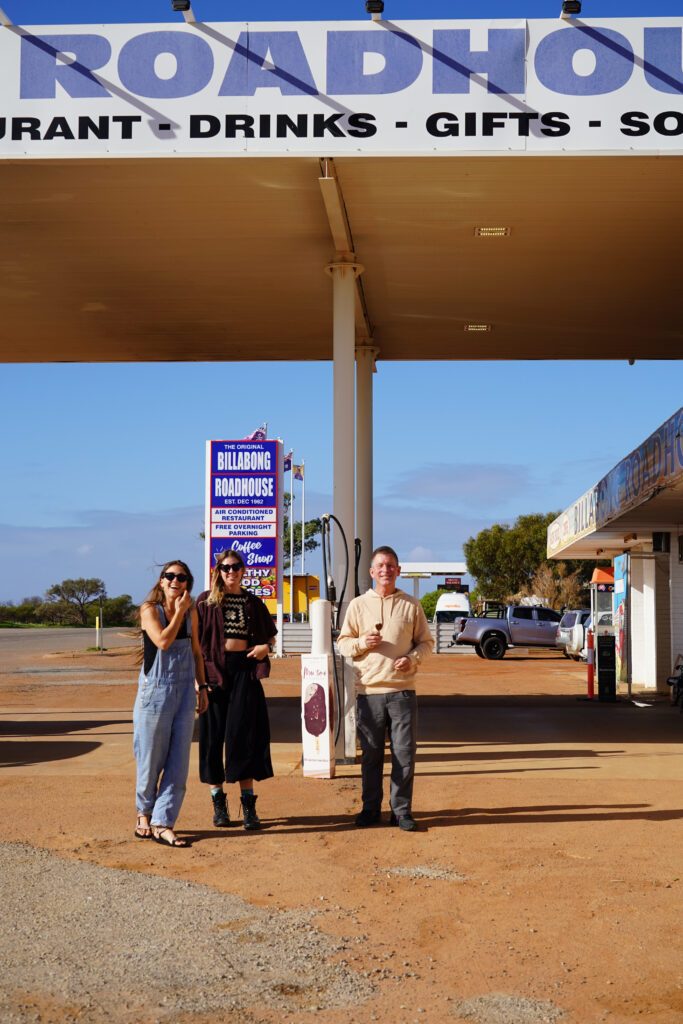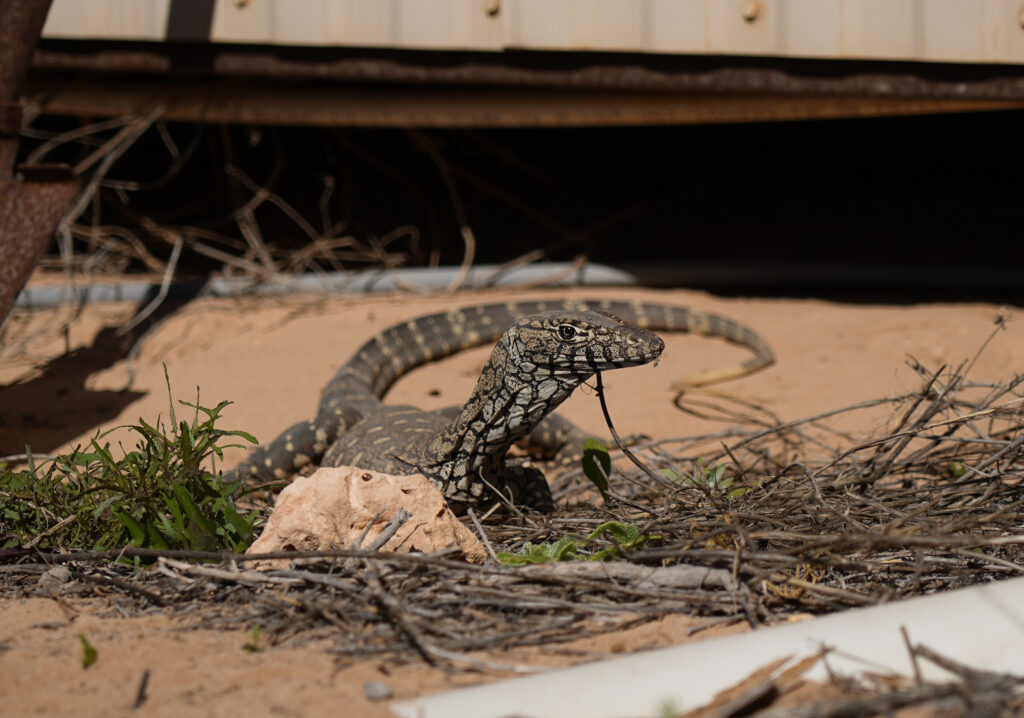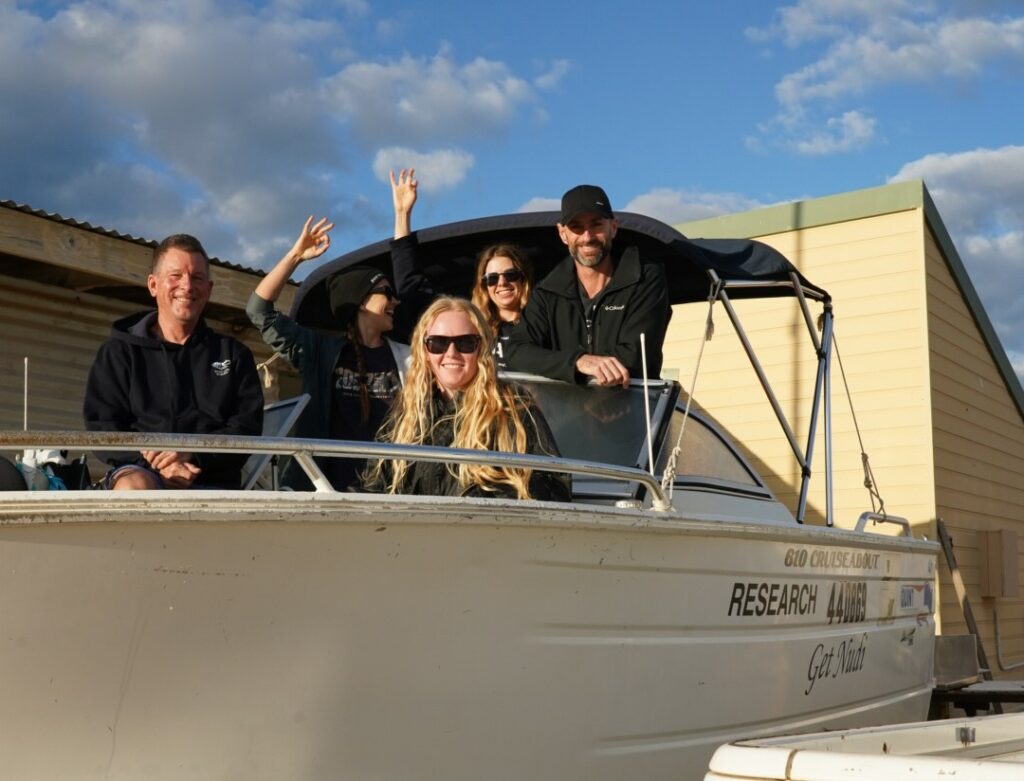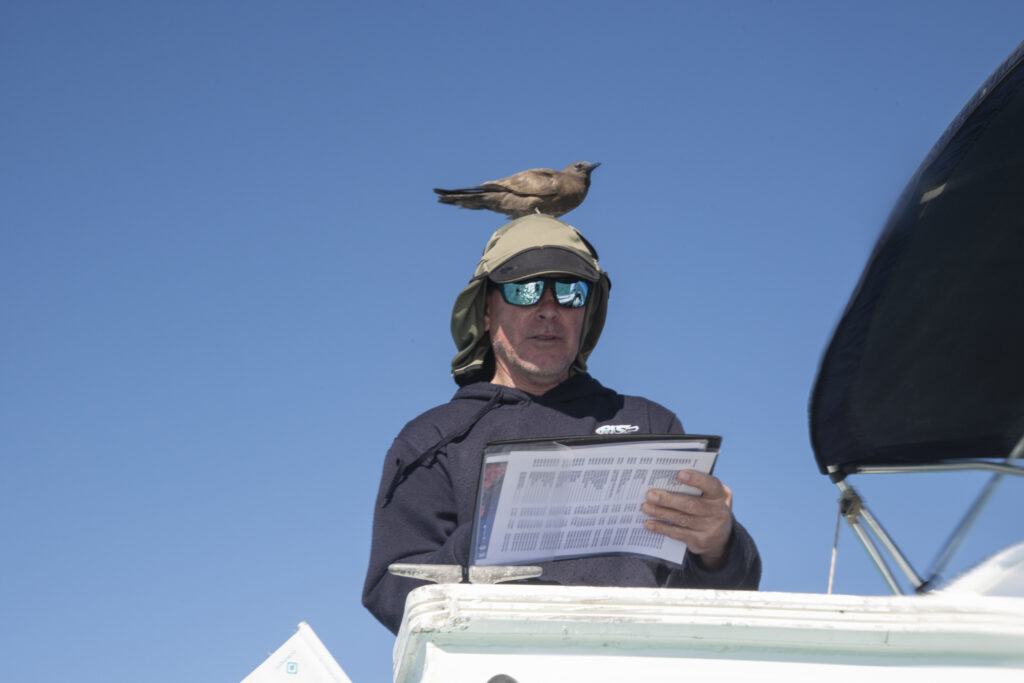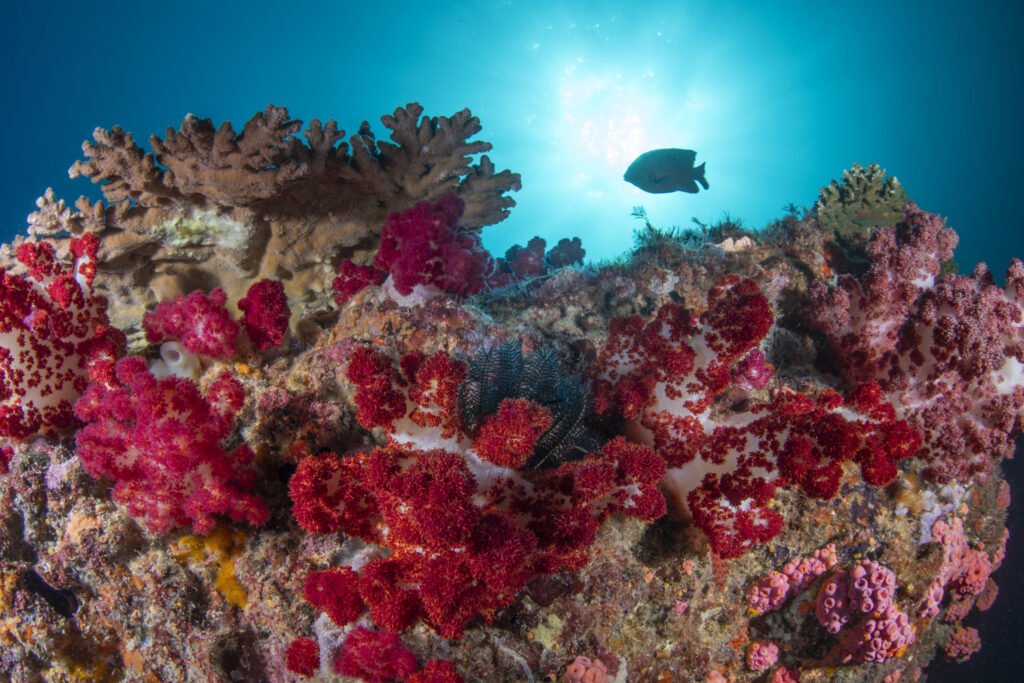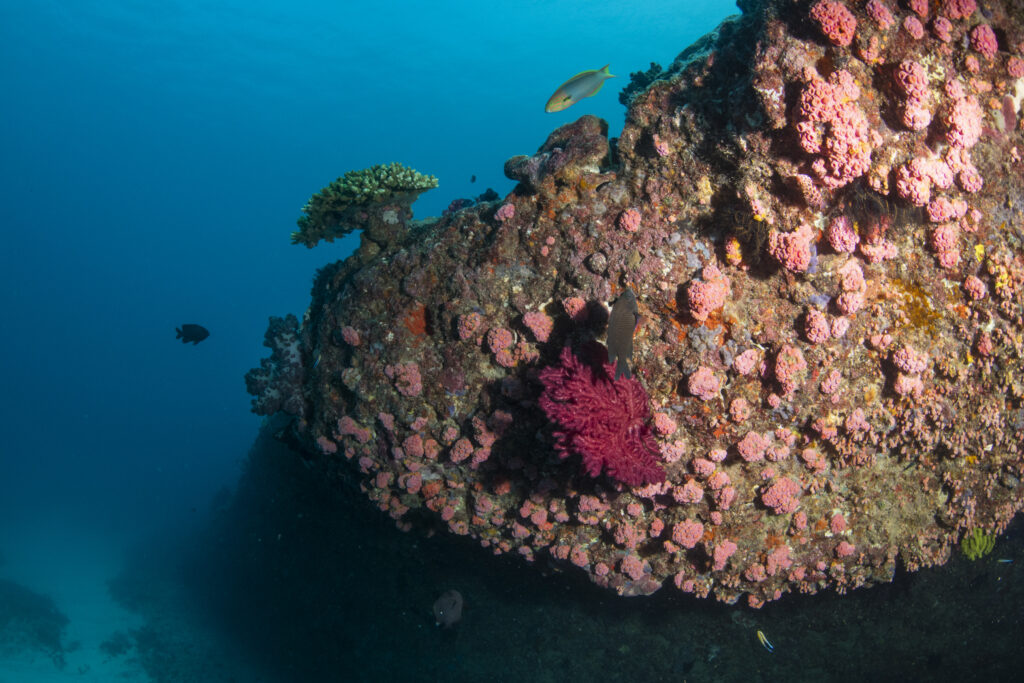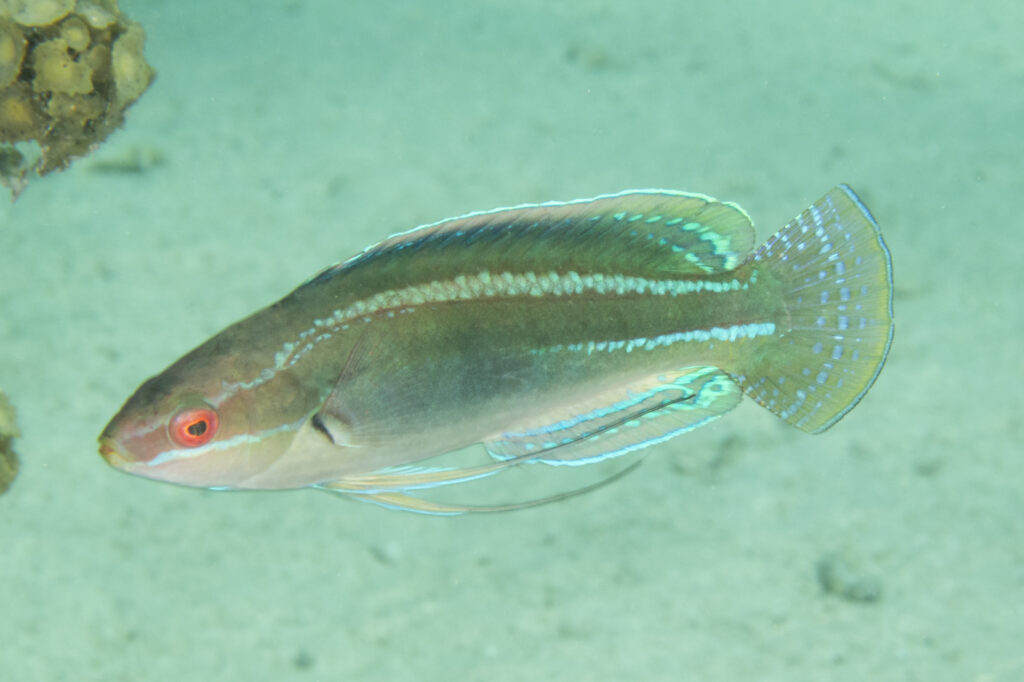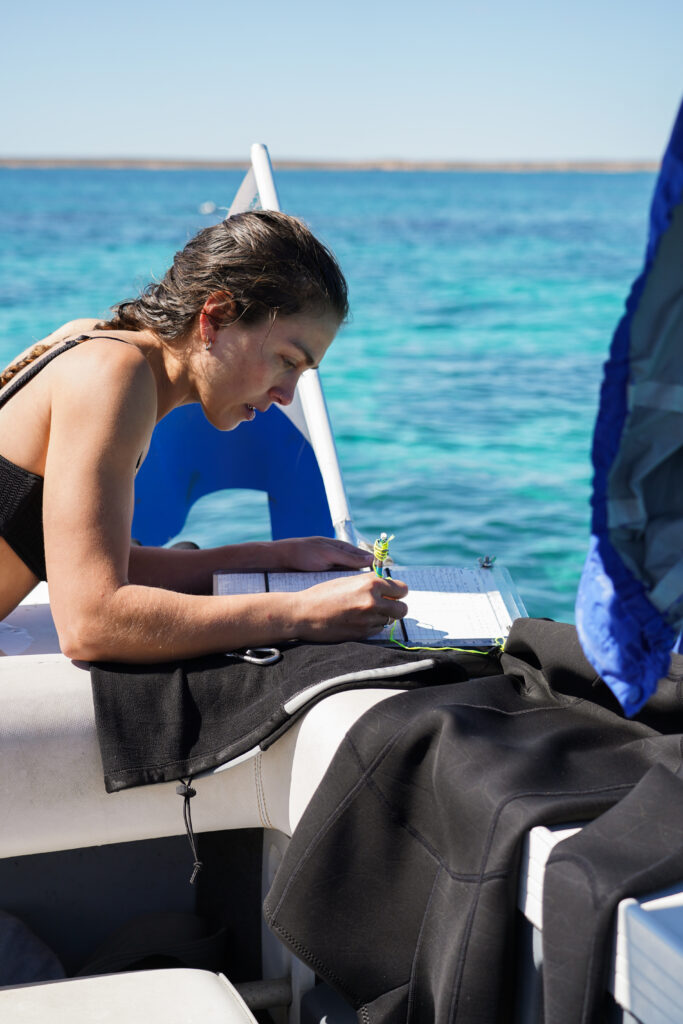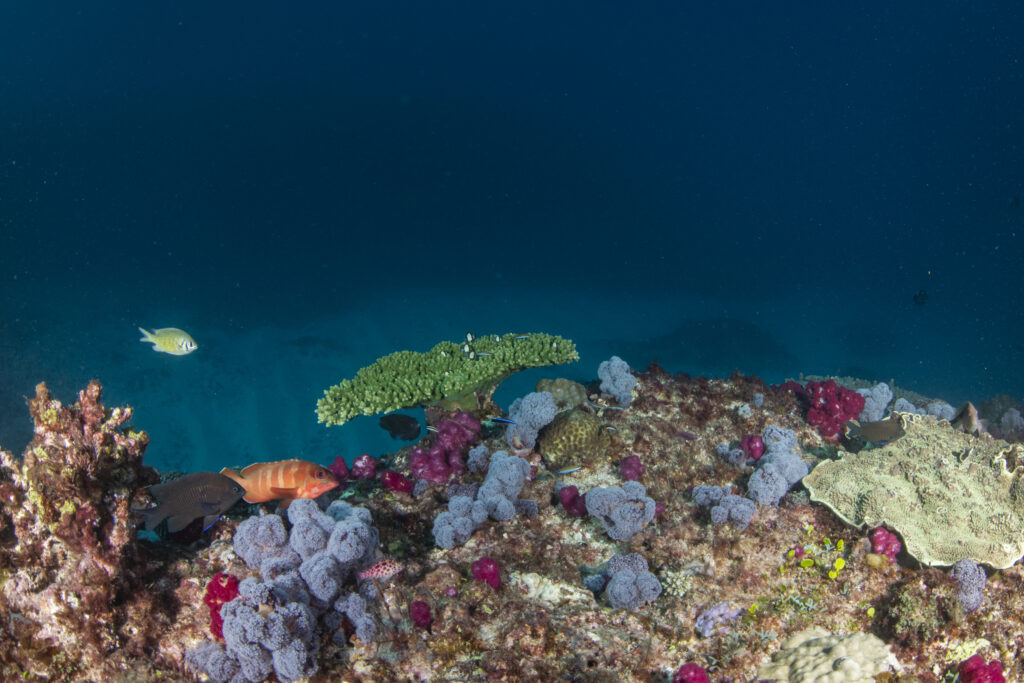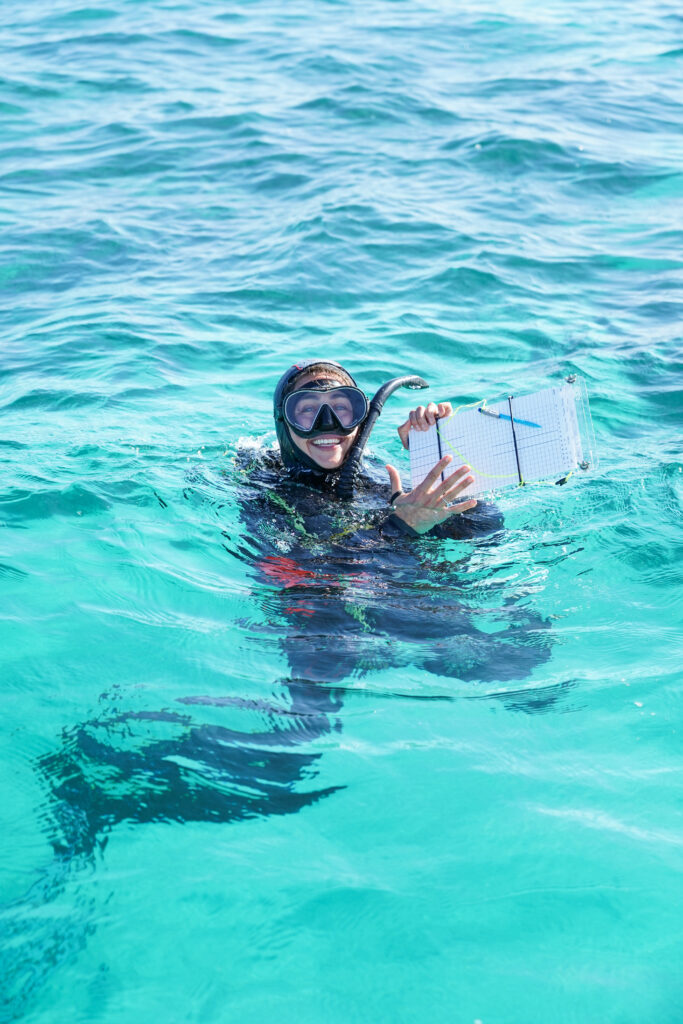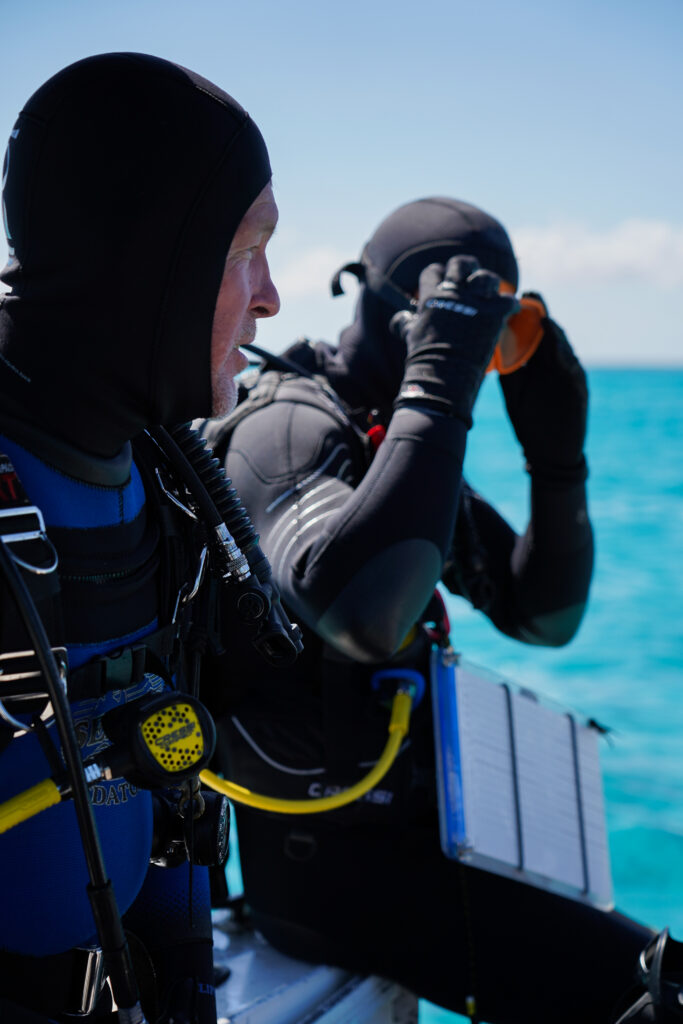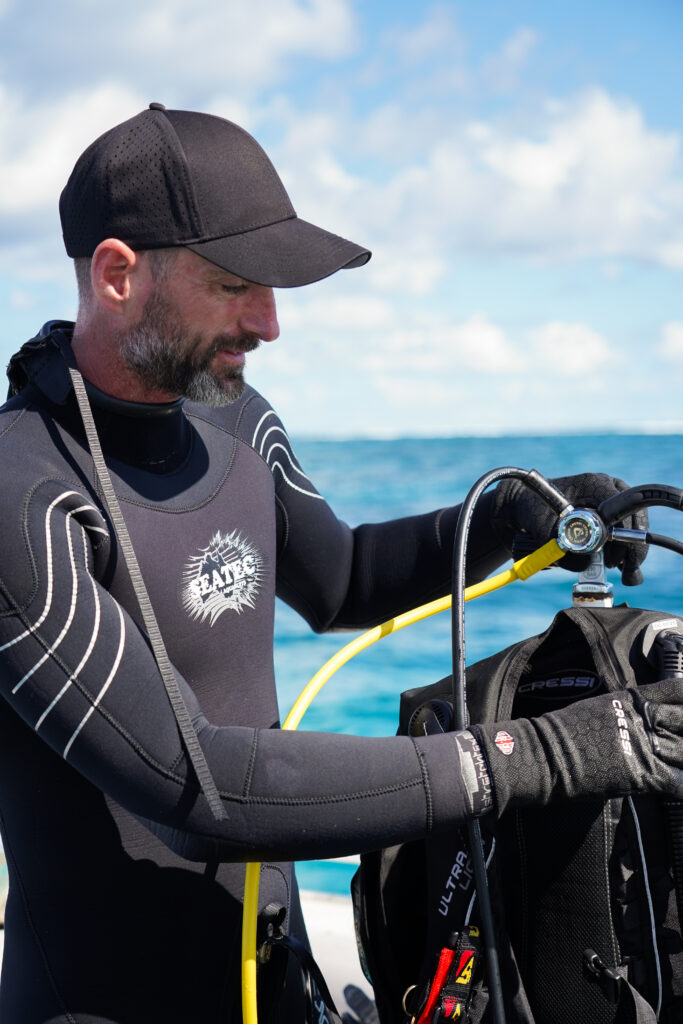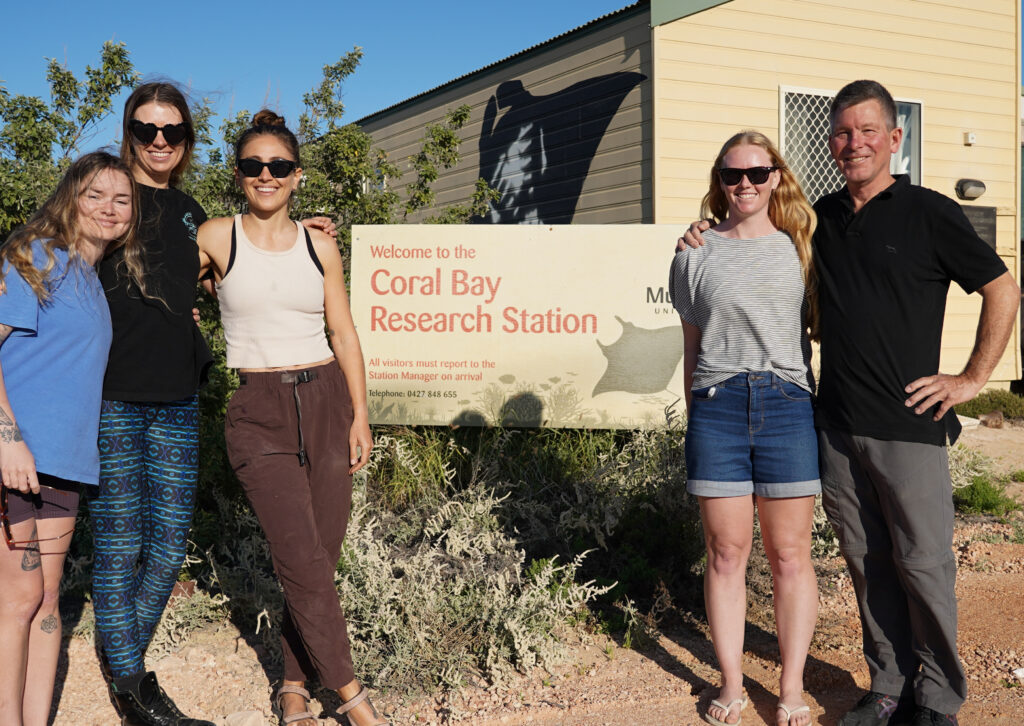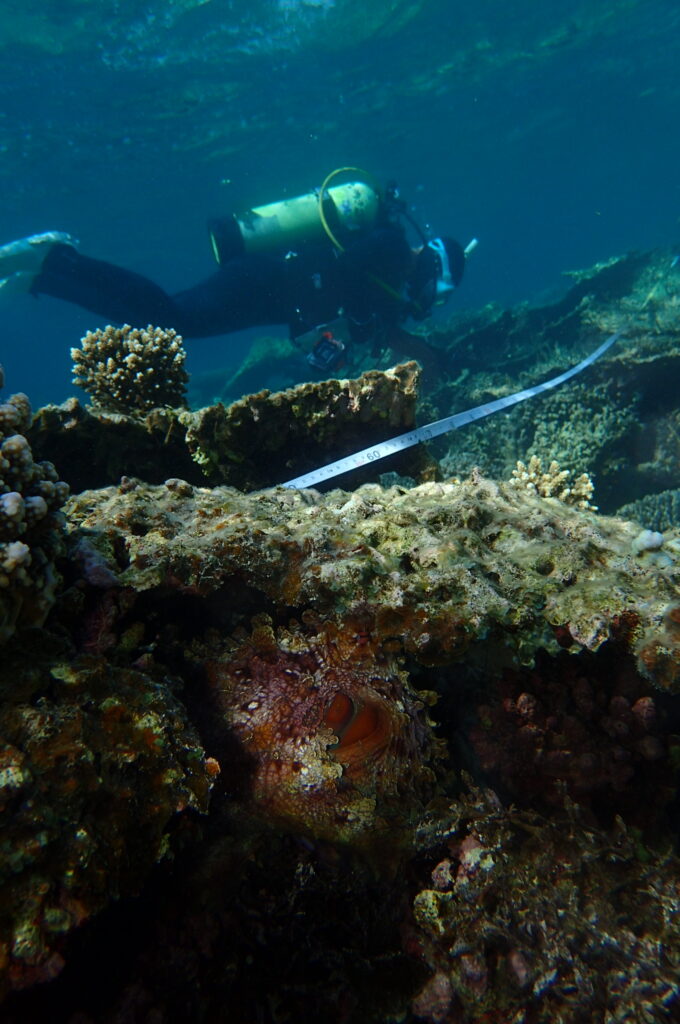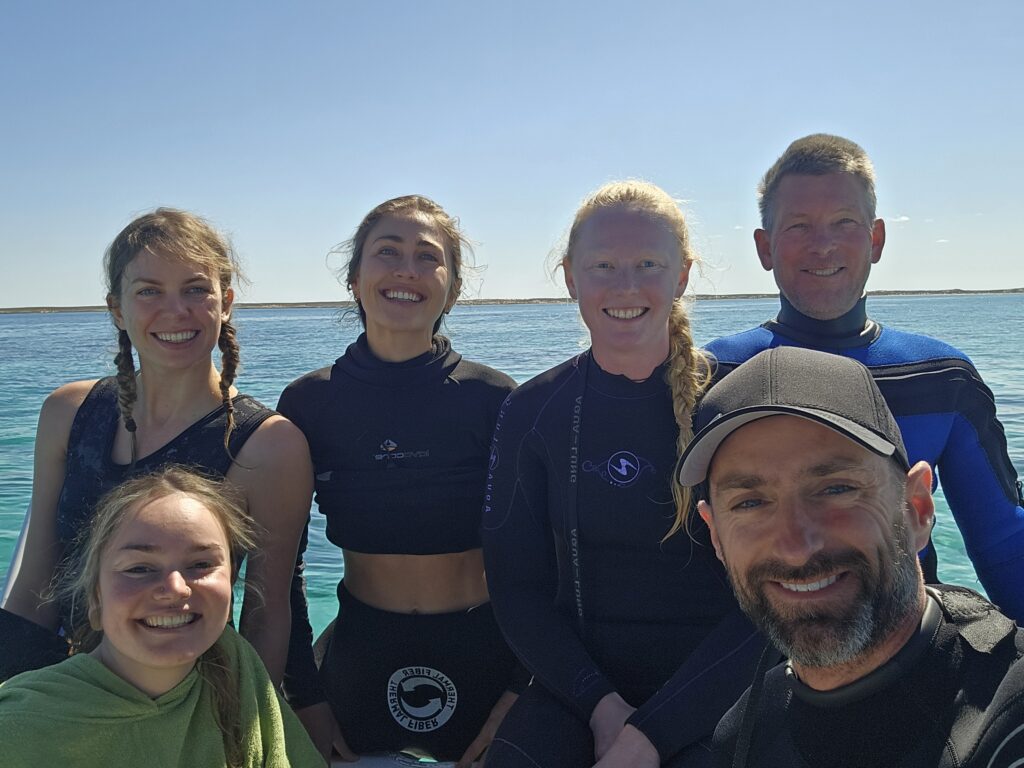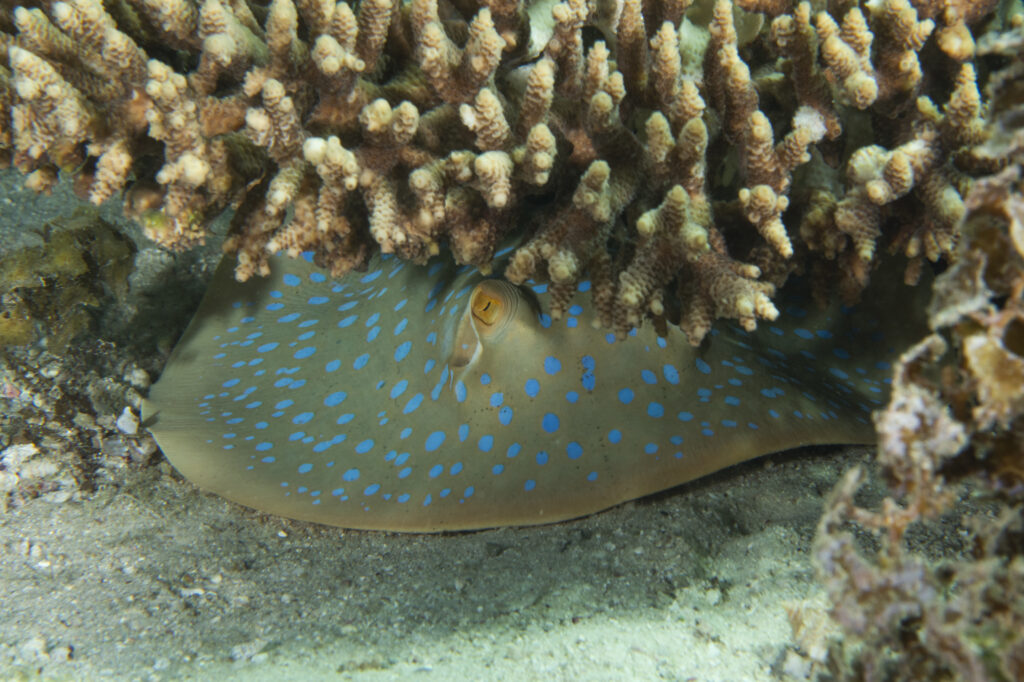In an extraordinary 7-day adventure completing annual surveys in August 2024, Reef Life Survey divers descended on the Ningaloo to take stock of its marine fauna and habitat. The team recorded coral reef in varying stages of damage and recovery, and even thriving at some sites. The megafauna were out in numbers, with humpback whales partway through their annual migration north, tiger sharks patrolling sand flats, and even the odd manta ray encounter.
Day 0: The Road Trip
Piling into a Hilux in Perth, locals Kevin Smith and Elle Haskin were joined by interstate emigrants Jo Schmid and Shenae Willis, while RLS Cofounder Rick Stuart-Smith was still airborne on his way north to Learmonth. With an immeasurable amount of dive gear aboard, the road tripping team set out for Geraldton (affectionately, Gero) on the first leg of the road trip. We checked into the Mantra on the Gero waterfront for the night, just before a downpour set in. This would be the only rain to darken our doorsteps for the duration of the trip- blue skies and uncharacteristically light winds were on the horizon. Bright and early the next morning, the sun was peeking out behind the clouds and we set off again for a mammoth leg to reach Coral Bay by afternoon. This road trip wouldn’t be complete without obligatory stops at the Billabong Road House for an icecream and photo op, and at the lookout over Shark Bay. Colourful wildflowers lined the roadside, and there were plenty of birds of prey and even a couple of emus to keep us all entertained.
The Murdoch University Research Station is nestled among the coastal scrub and red dirt of the small seaside settlement of Coral Bay: our home base for the week. It’s visited by the occasional kangaroo bounding through the backyard, a patrolling goanna, local ospreys, kites, and kestrels, as well as a prospective couple of zebra finches scouting for a nesting space in the rafters. We settled in, and began to plan for the trip ahead.
Day 1: Southern Run
Our first diving day saw the team embark on a long run south to the Pelican sites, watching humpbacks leaping clean out of the water beyond the reef breakers on the way, and dolphins dancing alongside the boat. Here we surveyed four transects in total, only stopping to admire brilliant regrowth of previously damaged plate corals and fields of staghorns. Shenae dug around for the fish of the day on her M2 search for cryptic species. The banded frogfish, Halophryne diemensis, thought it was well hidden beneath a coral alcove until Shenae poked her head in for a peek and a photo.
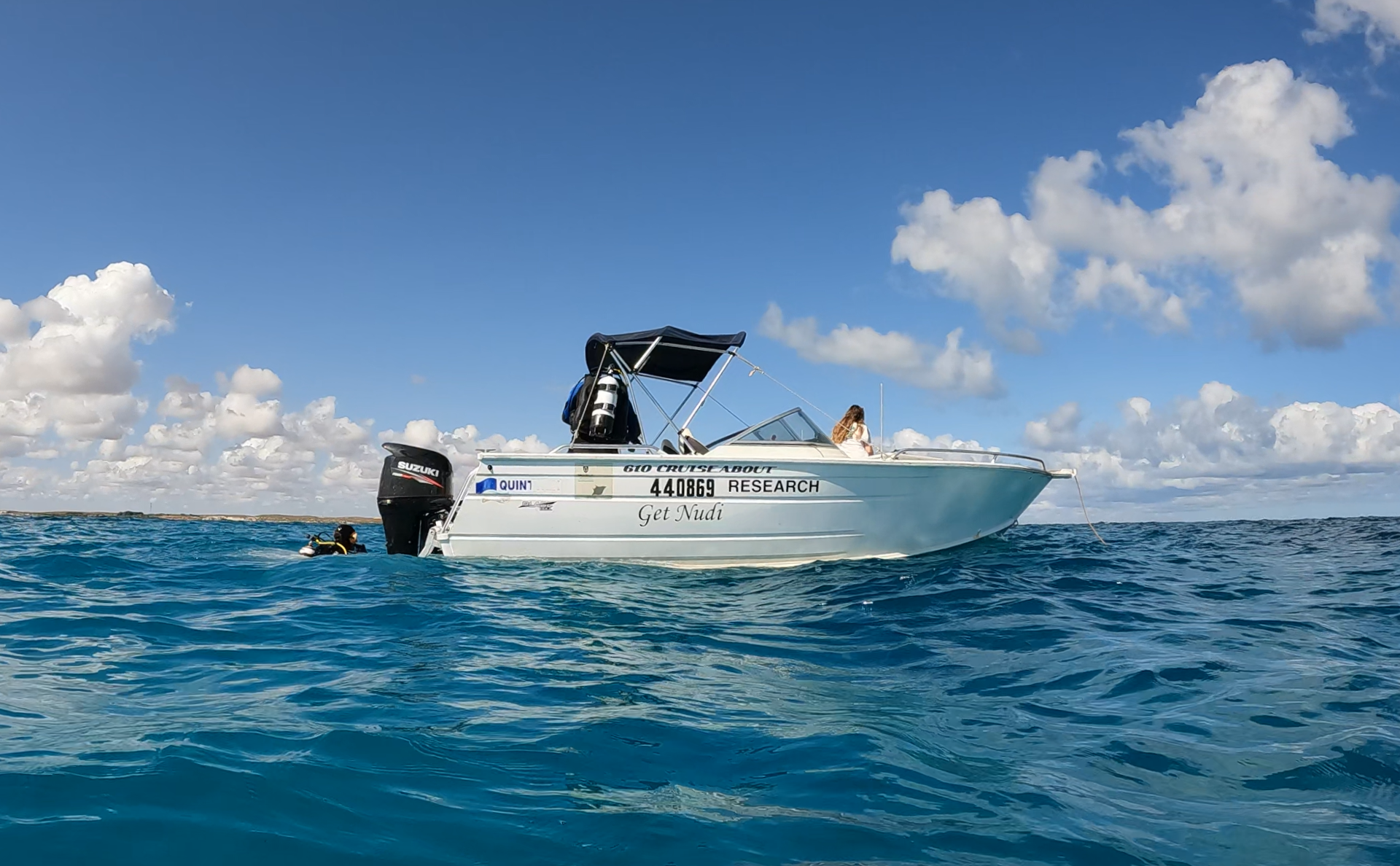
Day 2-3: Lagoon
Over the next two days, the team surveyed five sites. Notable sightings included a tawny nurse shark (Nebrius ferrugineus), a couple of new coral goby species to add to the database, huge drummers (Kyphosus bigibus), which quickly impeded the good vis with a cloud of poop, and of course plenty of humpback whales (Megaptera novaeangliae). Although there was plenty to sea underwater, the animal of the day was of the feathered variety.. While minding the boat as the rest of the team wrapped up their surveys, Kevin felt a mysterious weight land upon his head. Kevin’s passenger, a juvenile common noddy, ended up staying aboard his hat for over an hour in total- including while he hoisted the anchor.
Day 4: Whale day
Day four saw the team headed out of the lagoon to two offshore sites which were a little deeper and surgier than what we’d become accustomed to in the previous days. Site 1, Coral Bay Offshore, was at about 15m depth, with transects running along a reef wall that dropped a couple of metres down to a sandy bottom. Hanging out right by the anchor was our first big critter of the day: an impressively large blotched fantail ray (Taeniurops meyeni) which Kevin spent some time checking out. The reef was colourful and dotted with tiny glimmers of life like nudibranchs and Eviotas quickly darting about in attempts not to be scored on transect. Whale song could be heard for most of the dive.
The second site was similarly deep and surgy, and we dropped in alongside an impressive lineup of longfin bannerfish (Heniochus acuminatus) and cornetfish (Fistularia commersonii) cruising about some high profile reef structure. Rachel hung out topside minding the boat and watching for whales, while Kevin, Rick, Jo and Shenae conducted two end-to-end surveys. During the method two search for cryptic fish and invertebrates, Shenae looked up to see a tiger shark (Galeocerdo cuvier) swimming quite quickly and directly toward Jo on the opposite block of her transect, also with her head down searching for cryptics. An eerie feeling settled over that transect for the rest of the dive, although Shenae was insistent that ‘it wasn’t that big!'. Once the team returned to the boat, Rach announced that two whales had cut across our survey site, swimming directly between the two transect lines. Needless to say, we had all had our heads down doing M2.
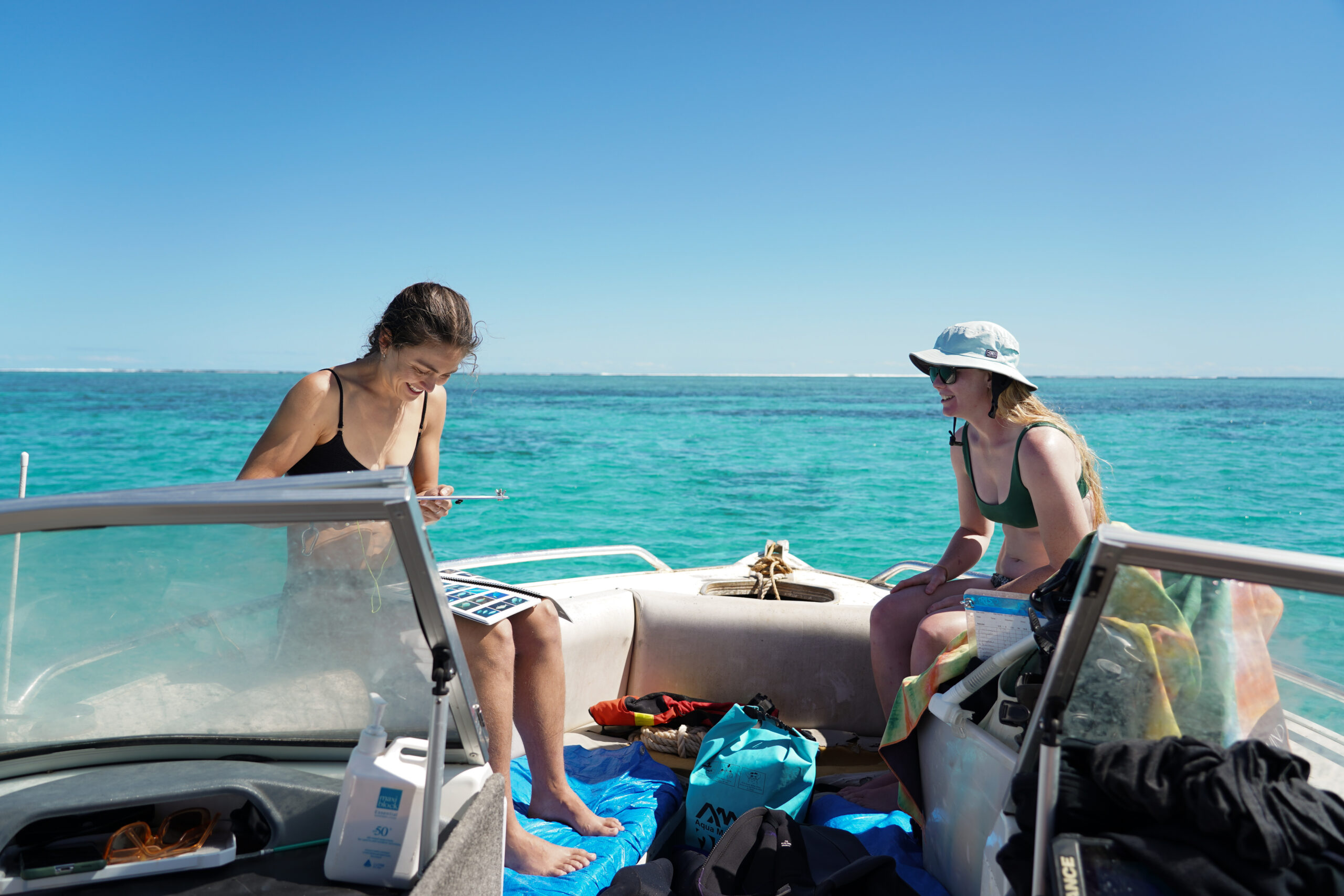
Day 5: Rick’s Eco Tours
This was the undisputed best day of the trip (and I’m sure someone said the best day of their life?). We had about an hour’s run north to sites Dugong and Bruboodjoo, making for some excellent sight-seeing along the way. Picking our way carefully through the passage, we were lucky to spot enormous numbers of whales both inshore and offshore, with some leaping out of the water, and calves following soon after in an adorable act of mimicry. Arriving to the site 'Dugong', we were already on a high, and the conditions were beginning to glass off. The shallow sites featured gorgeous corals, hidey holes for big fish, and sea turtles cruising by to keep Jo entertained as she minded the boat topside.
We motored on down to Bruboodjoo after wrapping up at Dugong, enjoying the increasingly good conditions and spotting sharks, turtles and rays galore on the sand flats along the way. A curious pod of dolphins even swum over to check us out, but declined our invitation to ride the wake. Bruboodjoo was a highlight dive, with lots of healthy coral, high profile structure, coral trout galore (Plectropomus spp.), thread-finned snapper (Symphorus nematophorus) and clouds of sparkling blue-green chromis (Chromis atripectoralis). Kevin and Shanae’s transect crossed over huge bommies, hosting an extraordinary array of fishes large and small, including species of parrotfish, butterflyfish, damsels, and surgeonfish.
Wrapping up the second site, the team made their way slowly back toward Coral Bay, keeping an eye out for critters across the sand flats. Rachel sat up the bow of the boat, playing megafauna spotter extraordinaire, and inevitably putting us onto both a tiger shark (Galeocerdo cuvier) and a leopard shark (Stegostoma tigrinum). GoPros were whipped out quicker than a flash. While the leopard shark didn’t stick around for long, the tiger cruised slowly by and its stunning stripes were clearly visible even from the surface. Off in the distance, a mother and calf humpback were having a snooze. As it turns out, Rick’s Eco Tours deserved more than a five star Yelp review, as we later came upon a large manta ray further up the coast. It was cruising about slowly enough that we had plenty of time to stop the boat, don our masks and snorkels, and go for a leisurely swim with this beautiful giant. This individual was melanistic, exhibiting a completely black dorsal surface, and a mostly black ventral surface (belly). The girl gang were on full stoke as the manta allowed us to swim alongside for quite some time, before moving slowly off. Ending the day of all days on a major high, we all crowded around our cameras squealing for the rest of the night (only after data entry of course).
The following day saw the team complete a further 6 transects across 3 sites in the lagoon, enjoying a couple of reef shark sightings and not so much enjoying a pesky current that gave us one hell of a workout. We all enjoyed a celebratory pub meal at Bill’s, reminiscing on the trip, telling tales from the deep, and already discussing next year’s Ningaloo trip.
A huge thank you to Harriett and the team at Ningaloo Reef Dive and Snorkel for many, many tank fills, and for going above and beyond to make sure we were well prepared for our surveys each day. We couldn’t have done it without you, and will see you again next year! A huge thanks to Frazer and Mike from Murdoch University for providing lodging at the Research Station and use of the Research Vessel ‘Get Nudi’ (and some extra tanks). All in all, we had an amazing time resurveying this beautiful part of our sunburnt country, and can’t wait to get back out here next year and continue tracking change on the Ningaloo.
